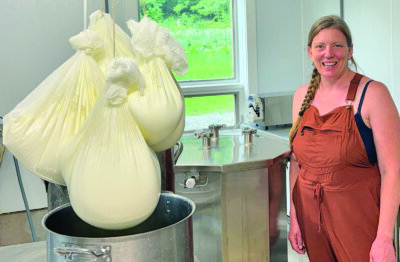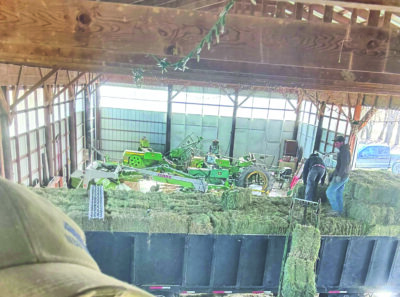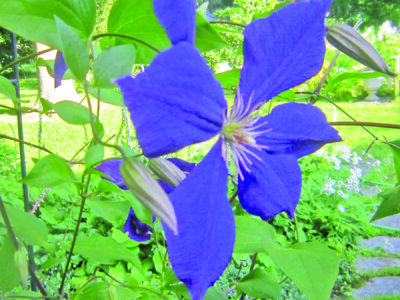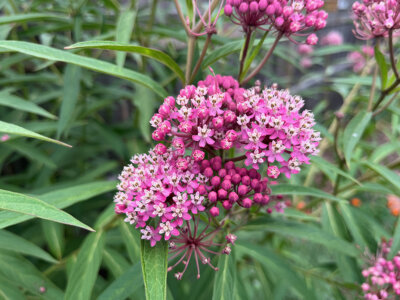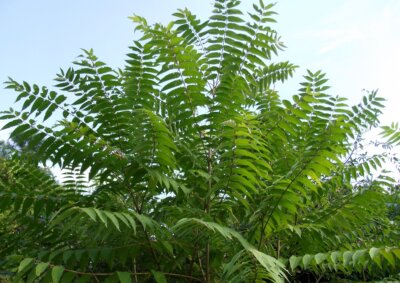Stick season – Turning sadness to hope

There’s a sadness in the air as “stick season” descends upon us. For those to whom this is a new phrase, it’s that time between glorious foliage colors and the sparkle of stars and ice crystals in the lengthening darkness. It might seem to fall on us suddenly, but truly it creeps in, allowing us time to prepare for our rejuvenation by the fire.
Today I’ll be planting my garlic bulbs, ensuring the continuation of life and exciting flavors. The bed was prepared and amended last week. Baby steps.
Soon I will also plant the flower bulbs I have, giving me hope for another season of beauty and renewal. Each year the effort seems like it will be too much, but I make myself do it. Sometimes it means planting 10 each day for a week. Digging holes is not always easy; it takes some organization. Be sure to have all your needed equipment with you to save trips back to the garden shed or garage. Trust me when I tell you, you will be so thrilled you made the effort come April followed by May and then June!
I try to keep a similar palette of color each year so that the few tulips Chippy didn’t get might come back and blend in. Since daffodils are toxic to chipmunks, a good number of them ensures color come spring. I also add minor bulbs, which tend to multiply (not always in the bed you originally planted them in). Also, alliums of various colors and heights, muscari (grape hyacinths), scilla, iris reticulata, camassia (blue and white) and narcissus will bloom at various times but also die back in time for your established perennials to hide their fading foliage. Be sure to let the foliage mature on its own to nourish the bulb. Usually six weeks is enough time.
Narcissus and daffodils: there are so many shades and varieties. If you have a big space to cover, the collections sold in hundreds will give you such an amazing variety. Pinks, bright orange centers, pure white, doubles or trumpets, fragrant or not. I love the tiny “tete-a-tetes” or “cheerfulness.” The N. poeticus recurva or ‘”pheasant’s eye” is one of my favorites. It’s also called N. actaea. A real steal is N. thalia in pure white, fragrant and usually with three blooms per stem. We never seem to tire of daffodils. Indeed, like lilacs, they often show where a homestead once stood.
The first bulbs to appear (and I anxiously peer from my windows into the garden for them) are snowdrops. Don’t be alarmed if any bulb shoots appear in December or during any thaw before spring. They are hardy and will survive just fine.
Purchased bulbs are usually pre-chilled and ready to bloom. I try to buy early, mid-season and late blooming tulips to keep the show going as long as possible. When you plant in late October or into December if soil allows, they will get additional chilling. I like to add some bulb-booster too, but it’s not necessary for success. Plant according to size—the bigger the bulb the deeper it should go in. My personal preference is to plant clusters of one variety. I dislike “soldiers in a row”!
Bulbs are great for under deciduous trees. They will get their sunshine before trees leaf out. Also the dry conditions they prefer are usually in place.
See? The sadness that was beginning to overtake us has turned to hope. It’s such a simple way to look forward with joy to the coming gardening year.
Related Stories
Popular Stories
If you enjoy The Charlotte News, please consider making a donation. Your gift will help us produce more stories like this. The majority of our budget comes from charitable contributions. Your gift helps sustain The Charlotte News, keeping it a free service for everyone in town. Thank you.
Andrew Zehner, Board Chair




